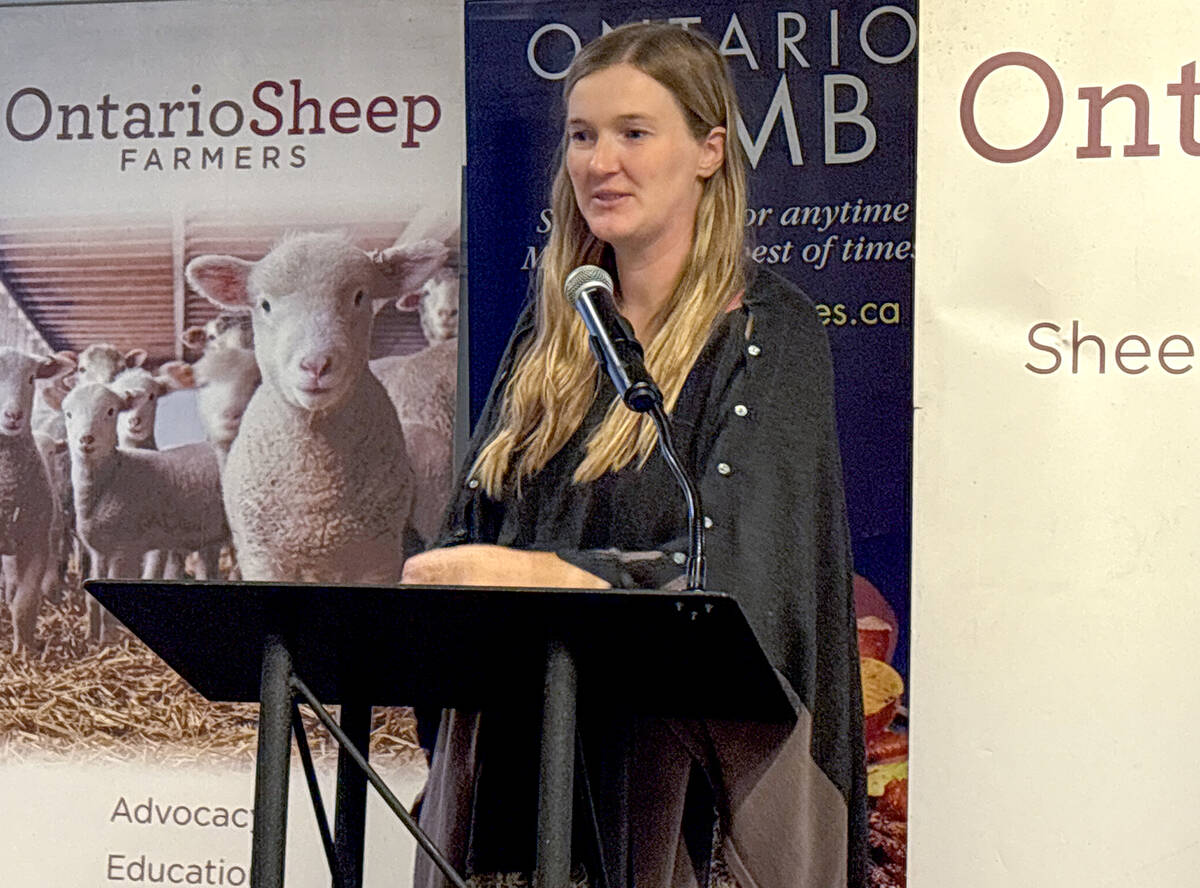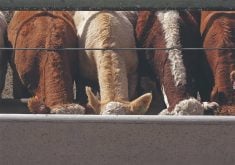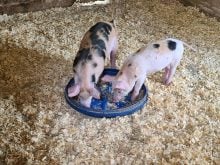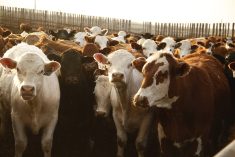We’ve all seen exuberant play behaviours in various animal species. Puppies roughhouse, fight, gnaw and gnash their teeth. Dogs bow to initiate play. Kid goats leap off structures and butt heads. Kittens chase anything that moves. Foals buck, nipping and kicking at their herd mates. You get the idea.
Why it matters: Fostering play in young captive animals could have welfare advantages.
There is growing recognition of the role of play in childhood development and similarly, play is seen as increasingly important for the welfare of domestic animals. It can be challenging to define play because it varies between species and circumstances.
Read Also

Footflats Farm recognized with Ontario Sheep Farmers’ DLF Pasture Award
Gayla Bonham-Carter and Scott Bade, of Footflats Farm, win the Ontario Sheep Farmers’ 2025 DLF Ontario Pasture Award for their pasture management and strategies to maximize production per acre.
Generally speaking, play is repeated, self-rewarding behaviour that is done when animals are in a relaxed, unthreatened state and is usually less functional than the adult form. Scientists categorize play behaviours further into three main groups:
- object play (cat chasing a string, calves nibbling a feed bag),
- social play (puppies and foals play-fighting), and
- locomotor-rotational play (horses bucking and kicking when turned out on pasture).
A central theory of play is that it prepares individuals for essential adult activities. For instance, animals at play learn important social cues in addition to the limits of their physical capabilities.
But how does play behaviour relate directly to animal welfare?
Generally, play is thought to be an indicator of good welfare. And play can also enhance welfare.
Over the years, researchers have linked play to positive welfare states. It seems obvious, but play tends to increase when animals are healthy, safe from threats and are well-fed. This makes evolutionary sense — an individual animal is less likely to survive if it ignored the fierce predator stalking it in favour of play-fighting with a herd mate.
Injury, inclement weather and crowding reduce play. There is also clear evidence to link rates of play to food availability and health. For instance, dairy calves run around less during weaning, when they are presumably hungrier. And lambs play less for roughly three days following castration, when they are likely experiencing pain from the surgery.
There are a few exceptions, though. Play can increase in some species when food is scarce, which is thought to improve an animal’s ability to survive. It can also rebound after an animal’s environment recovers from an adverse situation.
For instance, pigs that were raised in plain pens played more when put into pens with environmental enrichment compared to pigs that lived in enriched environments the whole time. The pigs apparently rebounded to make up for lost time by playing more when given interesting objects with which to interact.
Play is thought to be a generally positive and reinforcing activity through the release of endogenous opioids, also called feel-good hormones.
Studies in rats have shown how strongly individuals value play. Rats trained to press various levers showed a preference for access to a playmate over even their favourite food treats.
But not all play is rewarding. Play fights can escalate to real fights, which we can all agree are no fun at all.
In animals, play has both short- and long-term benefits. In the short term, play can reduce social aggression and stress, provide information about the animal’s environment (does the fence hold that carousing kid goat?) and stimulate the release of the feel-good hormones.
Animals use play to get to know one another, which has implications for social hierarchies and prevents all-out aggressive encounters.
All of these can enhance welfare. In the long-term, play is thought to be an important component to learning for adult behaviours.
An interesting phenomenon regarding play is that it is contagious — a playful individual can stimulate play in others. Scientists suspect that contagious play is regulated through dedicated mirror neurons in the brain that perceive and respond to emotions in others.
A major barrier to using play as an indicator of welfare is that it varies significantly and is flexible between species, which makes it challenging to study and apply to various domestic mammals.
Since we are ultimately in control of our captive animals, the onus is on us to acknowledge the importance of play. We can all look for opportunities to foster play in our animals. The result may be improved welfare.
-Jamie Rothenburger is a veterinarian who practices pathology and is an assistant professor at the University of Calgary’s Faculty of Veterinary Medicine.














